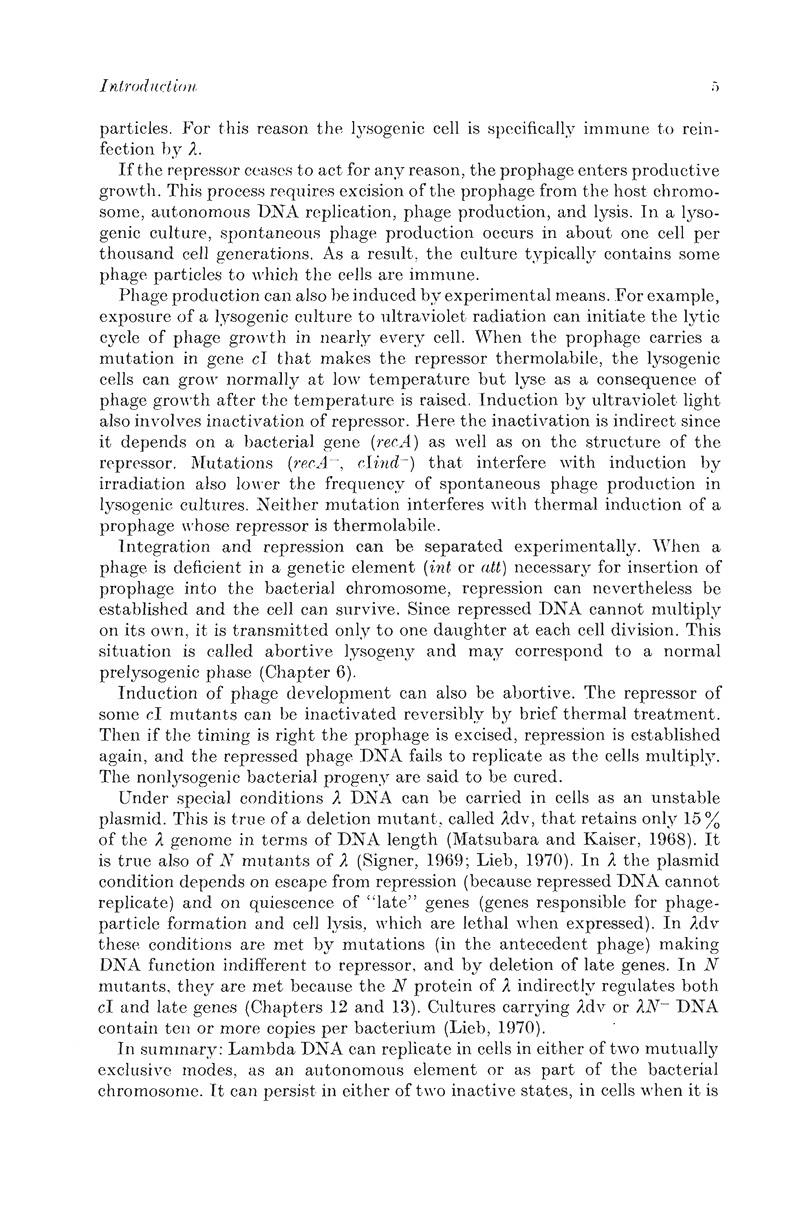
In order for lambda phage to propagate, DNA replication would imply the integration of the phage DNA into the bacterial DNA. This integration implies the cleavage of the bacterial DNA (presaging the activity of endonucleases by Daisy Dussoix 1) and the joining of the phage DNA with the bacterial DNA. Allan Campbell 2 described the mechanism of this process.
Thus, lambda phage forms the basis of much of modern genetic recombination, and also led to an understanding of the emergence of antibiotic resistance.
The following excerpt (pages 3 through 11) points out the signal importance of Esther Lederberg's discovery of lysogenicity in E. coli. The excerpt also shows the influence of Esther's discovery of lysogenicity upon the work of a number of other major researchers who then elaborated upon Esther's research.
1 A discussion about the relationship between lambda and the discovery of restriction endonucleases in E. coli K-12 may be found in 2006, Murray, N. E., "The impact of phage lambda: from restriction to recombineering", Biochemical Society Transactions 34(2), 203-207 .
2 Campbell, A. 1959 "Ordering of genetic sites in bacteriophage λ by the use of galactose-transducing defective phages", Virology 9, 293 .
|
Page 5
|

Note: The abstract in 'Genetics' is totally different from the 'Microbial Genetics Bulletin' publication. The 'Microbial Genetics Bulletin' publication has a far more detailed discussion of λ lysogenicity.